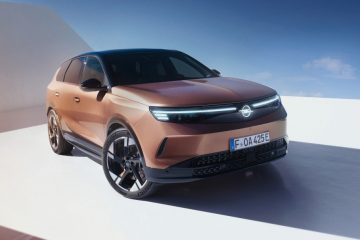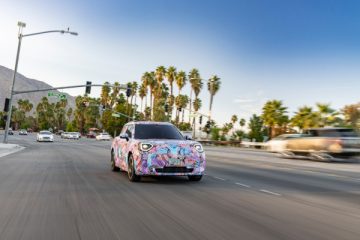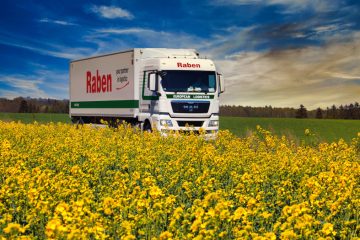 This neat little model exemplifies ŠKODA’s attention to detail, no matter how small the component, its eye for simple, clever solutions, and its talent for innovation. Following a partial makeover and the launch of the GreenLine version, an economical Green tec version of the Fabia, Fabia Combi and Roomster, with environmentally friendly technology, is entering the highly-charged compact car market. The Fabia Green tec and the Fabia Combi Green tec are available with 1.2 12V HTP/51 kW, 1.2 TSI/63 kW and 1.2 TSI/77 kW engines, while the Roomster Green tec can be ordered with a 1.2 TSI/63 kW or 1.2 TSI/77 kW engine. This is the first time that Start-Stop and energy regeneration systems will be associated with petrol engines.
This neat little model exemplifies ŠKODA’s attention to detail, no matter how small the component, its eye for simple, clever solutions, and its talent for innovation. Following a partial makeover and the launch of the GreenLine version, an economical Green tec version of the Fabia, Fabia Combi and Roomster, with environmentally friendly technology, is entering the highly-charged compact car market. The Fabia Green tec and the Fabia Combi Green tec are available with 1.2 12V HTP/51 kW, 1.2 TSI/63 kW and 1.2 TSI/77 kW engines, while the Roomster Green tec can be ordered with a 1.2 TSI/63 kW or 1.2 TSI/77 kW engine. This is the first time that Start-Stop and energy regeneration systems will be associated with petrol engines.
Significantly reduced CO2 emissions
The main aim of the newly developed efficient technology was to reduce CO2 emissions. In the Fabia and Fabia Combi with the 1.2 12V HTP/51 kW engine, the difference between the normal version and the Green tec version is 9 g of CO2 per kilometre; with emissions of 119 g/km, both cars are among the most efficient cars in their class. These values were achieved not only by means of Start-Stop and brake energy regeneration systems, but also by fitting 15-inch tyres with reduced rolling resistance and a modified five-speed gearbox. The higher gears have been extended, allowing for lower revolutions at higher speeds and thus reduced fuel consumption.
The CO2 emissions of the 1.2 kW TSI/63 kW engine were reduced by 7 g/km to 114 g/km, or by 10 g/km to 124 g/km in the Roomster. The same values were achieved with the 1.2 TSI/77 kW engine thanks to the use of green technology.
Green tec models can be identified by:
● a green square after the sign indicating a 1.2 12V HTP/51 kW engine;
● a green “i” in the sign indicating a 1.2 TSI/63 kW engine;
● a green “i” in the sign indicating a 1.2 TSI/77 kW engine, accompanied by a green square after the engine sign.
Constantly refreshing: a meaningful improvement in the details
Externally, the innovated Fabia, Fabia Combi and Roomster of the 2012 model year can be recognized by their short roof whip aerial, which reduces air resistance while maintaining the same quality of radio reception. Earlier this year, Family models were introduced, offering practical and convenient equipment and a Crystal fabric interior. So far, the trim has been black, but as of the 2012 model year a combination with upholstery in blue will be available. A Black Package, picking up on the Fabia Sport design study presented two years ago, can optionally be fitted in the sporty RS models. The black headlights and fog lamps match the radiator grille, lending the RS models a visually more emphatic dynamism.
Starting in the 2012 model year, the round fog lamps in the stylishly attractive Scout versions of the Fabia, Fabia Combi and Roomster can be replaced by LED daytime running lights, which will make the dynamic look of the Scout all the more appealing.
The upgraded Amundsen+ navigation system will be available with pre-installed navigation data covering either Eastern and Central Europe or Western and Central Europe. Destinations can be entered using a postcode of up to seven digits (the coding used by several European countries). Not least, the range of body colours will be refreshed. For the Fabia and Fabia Combi, the new metallic Lava Blue paint and Platin Grey will be available, while the Roomster palette will include Lava Blue, Malachite Green and Mato Brown.
Advanced benefits: variability and large interior space
While the Fabia, Fabia Combi and Roomster have been improved by a number of technical advances, overall the sophisticated design of these advanced cars has remained unchanged. With luggage capacity of between 505 and 1,485 litres, the Fabia Combi continues to provide the sort of boot space that exceeds the norm in this class. Meanwhile, the ŠKODA Roomster, with its versatile VarioFlex rear seat system, continues to fulfil the requirements of the whole family. The luggage compartment volume can be expanded from 480 litres to 1,810 litres, making the Roomster a load-carrying champion.
Explicit body language: design
The visually extended front end gives the impression that the Fabia and the Roomster have been lowered, despite their unchanged height. The bonnet conceals an advanced direct fuel injection turbocharged engine or a dual-turbocharged engine. The Green tec versions of the Fabia, Fabia Combi and Roomster are set to make their motor show debut in Geneva. These ecologically- and economically-oriented versions of the 1.2 12V HTP/51 kW, 1.2 TSI/63 kW and 1.2 TSI/77 kW engines are the benchmarks in their segment. Their main advantages are their quiet running, the smooth engine torque and low combined consumption.
The grille and the three-dimensionally shaped headlamps define the dignified look of the Fabia and the Roomster, emphasizing the horizontal line at the front. Both cars look confident and carry strong emotional cache. The visor-like window surface which wraps around the passenger compartment has always been a key feature of the Roomster and the Fabia, and remains so. The elegant rear end and the classic C-shaped tail lamps shared by all ŠKODA models clearly betray the Fabia’s origins. Likewise, the Roomster declares its affiliation to the ŠKODA family with identically designed tail lights. Roof rails are available as an optional extra for the Fabia and the Fabia Combi.
In a word – quality: the interior
Quality materials enhance the value of the interior, while thoughtful details round off the sense of a car belonging to a higher class. The Chrome Package, for example, comprising chrome air vent inserts, gear knob, gear lever gaiter frame and handbrake locking button, lends the interior an air of exceptional quality. The optional three- and four-spoke leather multifunction steering wheels offer audio system and telephone remote control. The comfortable, breathable seat covers and precision-designed Climatronic air conditioning controls infuse the interior with high quality.
The instrument panel’s central display also indicates the recommended gear, a feature which helps to cut back on fuel consumption. Cars fitted with DSG transmission also display the gear currently in use. The outside temperature is constantly shown on the central display as this information is vital for safe driving. Cruise control and individually programmable speed warnings to alert the driver to motorway speed limits and any speed restrictions related to the use of winter tyres are also displayed here.
Like their siblings higher up in the ŠKODA family, the Fabia and Roomster can be fitted with the Amundsen+ navigation system, complete with a five-inch touch screen, SD card reader and Aux-In jack for external audio devices. New features of this navigation system include navigation data covering either Eastern and Central Europe or Western and Central Europe. An optional Mobile Device Interface (MDI) for use with iPod, Aux-In, USB and Mini-USB units is also available (in combination with the Swing radio or Amundsen navigation system) and is located under the glovebox.
The GSM II phone preparation incorporates audiostreaming to keep two different Bluetooth connections on the go at the same time. This means you can phone via the hands-free device while listening to music from an external memory device. Both connections can be operated via the buttons on the optional multifunction steering wheel. Voice control is also activated via a button on the multifunction steering wheel or on the phone holster of the GSM II Comfort system.
Economic and environmental: the engines
The GreenLine models of the Fabia, Fabia Combi and Roomster are available with a 1.2 TDI CR engine, one of the most economical diesel engines on the market, paving the way for lower consumption. The three-cylinder engine has maximum power of 55 kW (75 bhp) and achieves a maximum torque of 180 Nm at 2,000 rpm. This engine has a five-speed manual transmission and a Start-Stop system, significantly reducing fuel consumption. The recommended gear feature signalling the opportune moment to change gear, the lower rolling resistance tyres and aerodynamic modifications to the body and chassis of the Fabia hatchback are key fuel efficiency factors. The combined fuel consumption of the Fabia and Fabia Combi is 3.4 l/100 km, which corresponds to CO2 emissions of 89 g/km. The Roomster boasts combined consumption of 4.2 l/100 km and CO2 emissions of 109 g/km. The GreenLine versions, like their standard counterparts, offer agile handling and superior pulling power, with the Fabia accelerating from 0 to 100 km/h in 14.2 seconds (Fabia Combi: 14.3 seconds; Roomster: 15.4 seconds), and a maximum speed of 172 km/h for the Fabia and Fabia Combi (Roomster: 165 km/h).
Seven petrol and four diesel engines are available. The power outputs of the petrol engines range from 44 kW to 132 kW for the Fabia and from 51 kW to 77 kW for the Roomster, while the diesel units for both deliver between 55 kW and 77 kW. All engines supplied within the EU meet EU5 exhaust emissions regulations, offer excellent fuel efficiency and, therefore, report extremely low CO2 emissions. All cars with manual gearboxes (apart from the three-cylinder 1.2 HTP petrol engines) include a gear selection indicator to encourage fuel-efficient driving. An arrow on the dashboard insert screen suggests when to change gears in order to keep the engine in its most efficient rev range.
As elsewhere in the ŠKODA family, the Fabia and Roomster engine range is determined by the art of downsizing. Drastically reduced engine capacities are supplemented by turbo-charging or twin-charging and high precision direct fuel injection in order to achieve the optimal combination of performance as well as fuel efficiency. Turbo-charging significantly increases torque levels, particularly in petrol engines, while pulling power is available from much lower revs than with conventional, naturally-aspirated engines. The top power unit of the Fabia series is the four-cylinder petrol engine in the Fabia RS. Despite its capacity of just 1.4-litres, twin-charging via a turbocharger ensures that the power output is 132 kW while peak drivetrain torque is 250 Nm from 2,000 rpm right through to 4,500 rpm. Combined consumption is just 6.2 l/100km, while CO2 emissions are a mere 148 g/km. Such performance and emissions are best-in-class standard.
Yet performance has not been the only development target. ŠKODA has set the bar high with the environmental compatibility, smooth running and low noise levels of its modern engines. When connected to the optimized seven-speed dual-clutch direct shift DSG, the 1.2 TSI petrol engine with 77 kW offers outstandingly low running costs. Fuel consumption of just 5.3 litres per 100 km and CO2 emissions of only 124 g/km are exceptional at this performance level. The four-cylinder TSI engine is offered at two levels of output – 63 kW and 77 kW, both combined with a manual five-speed gearbox.
Diesel engine outputs range from 55 kW to 77 kW, with capacities of 1.2 and 1.6 litres. All diesel engines are fitted with a particulate filter and use high pressure injection via a common-rail system, achieving injection pressures of up to 1,800 bar for the 1.2 TDI CR and 1,600 bar for the 1.6 TDI CR. The fast-response injectors allow up to six injections per cycle, noticeably improving engine refinement and drastically reducing exhaust emissions. Additional cleaning of the exhaust gases is achieved by an oxidation catalyst and exhaust gas recirculation in all diesel engine versions of the Fabia and Roomster series.
Engine range:
● 1.2 HTP/44 kW (60 bhp) – EU 5 (not available for the Roomster)
● 1.2 12V HTP/51 kW (70 bhp) – EU 5/EU2 (+ Green tec for the Fabia and Fabia Combi)
● 1.4 16V/63 kW (86 bhp) – EU 5
●Ï 1.2 TSI/63 kW (86 bhp) – EU 5 (+ Green tec)
● 1.2 TSI/77 kW (105 bhp) – EU 5 (+ Green tec)
● 1.2 TSI/77 kW (105 bhp) (DSG) – EU 5
● 1.6 16V/77 kW (105 bhp) – EU 4/EU 2
● 1.6 16V/77 kW (105 bhp) (A) – EU 4/EU 2
● 1.4 TSI/132 kW (180 bhp) – EU 5 (for RS)
● 1.2 TDI CR DPF/55 kW (75 bhp) – EU 5/EU 4
● 1.6 TDI CR DPF/55 kW (75 bhp) – EU 5 (not available for the Roomster)
● 1.6 TDI CR DPF/66 kW (90 bhp) – EU 5
● 1.6 TDI CR DPF/77 kW (105 bhp) – EU 5
Protection for everyone: safety
Numerous systems ensure the safety of all Fabia and Roomster passengers and of other road users. Four airbags protect the front occupants, with the option of another two depending on the trim. ABS with brake assist is also a standard feature. The ESP system is accompanied by tyre pressure warning and hill start assist.
The advanced headlamp system has been designed to provide enhanced night-time road illumination whether reflector and/or projector units are fitted. An energy-efficient daytime running light system is integrated into the new double-chamber fog lamps, roughly halving their energy consumption. This technology is also better at illuminating the road in foggy conditions.
The Fabia and the Roomster respond to emergencies with flashing brake or warning lights. If the electronics gauge that an emergency braking situation is in progress – over 7 m/s2 at more than 60 km/h – the brake lights flash at a frequency of 3 Hz to warn the following traffic. If, after emergency braking, the vehicle speed falls below 10 km/h and deceleration is under 2.5 m/s2, the hazard warning lights switch to their normal cycle (1.25 Hz) to alert the following drivers.
For convenience, the windows of the Fabia and the Roomster can be controlled via the remote central locking device. All power-operated windows can be closed on leaving the car by long-pressing the lock button. In the summer, drivers who have left their Fabia or Roomster parked in direct sunlight can open the windows remotely to cool the interior.
The anti-theft system in both models has become even more resilient. The new-generation immobilizer now protects vehicles more effectively against theft. Not least, Fabia and Roomster safety is enhanced by a larger brake booster. The larger cylinder allows for better gauging of the braking effect and responds more spontaneously to the force applied on the pedal, making retardation faster and more sensitive.
A DOUBLE HELPING OF SPORTINESS: THE ŠKODA FABIA RS AND THE FABIA COMBI RS
ŠKODA has a long-standing association with motor sport stretching all the way back to its formation. From its earliest years, the Mladá Boleslav factory’s specially adapted sports cars have been battling for victory on racing circuits and in rallies around the world. The latest RS road cars carry on this sporting tradition, placing the second-generation Fabia at the forefront of the competition. Now, for the first time, there are two RS versions in the Fabia range: both the hatchback and estate body styles, with a 1.4 TSI 132 kW (180 bhp) engine, continue the RS range’s renowned combination of sporty performance with exceptional fuel efficiency and environmental-friendliness.
Both versions of the new ŠKODA Fabia RS are unmistakable thanks to their unique front bumpers with integrated round fog lamps, which can also be equipped with an optional cornering function or LED daytime running lights. The RS symbol sits proudly within the grille’s chromed frame, while red-painted brake callipers hint at their performance potential from behind the spokes of the RS bespoke Gigaro 17-inch aluminium wheels; the tinted glass is another feature indicating this car’s special status in the Fabia range. The rear sports a bumper with a diffuser, while the car’s self-confident appearance is underscored by a dual-pipe exhaust. The roof and the rear spoiler of the Fabia hatchback are available in black, white and silver on request, depending on the car’s body colour. The roof spoiler on both the hatchback and estate versions increases downforce at higher speeds which, when combined with the upgraded running gear and performance-oriented electronic driver aids (ESP, ABS and TCS), guarantees the Fabia RS safe and agile handling. The XDS differential increases driving pleasure by braking the inside front wheel when rounding bends, transferring torque to the outside wheel. The lateral torque helps to pull the Fabia RS into bends, providing the car with excellent agility. Tyre pressure monitoring and hill start assist are standard features enhancing the pleasure of the driving experience and passenger safety.
Inside the Fabia RS and the Fabia Combi RS, the sports seats feature the RS symbol on their backrests. Driver and front passenger seats are height adjustable and, as in all versions of the Fabia, the steering wheel is tilt and rake adjustable. The RS boasts a three-spoke leather steering wheel, also available in an optional multifunction version with control paddles for the seven-speed automatic DSG gearbox. The distinct interior design is underscored by the Onyx dashboard. The stainless steel pedals are fitted with non-slip pads.
All Fabia RS models have Climatic air conditioning and a specially designed “RS” dash insert, and are wired for a four-speaker stereo system. Customers can also order red seat covers and black floor mats with silver or red stitching depending on the upholstery colour. The steering wheel, gear lever and handbrake handle are leather upholstered.
Both RS models offer impressive handling following ŠKODA’s introduction of a dual-charged four-cylinder petrol engine to its range for the first time, which produces 132 kW (180 bhp) from a mere 1.4 litre capacity and a torque peak of 250 Nm. With a top speed of 224 km/h – 226 km/h for the estate version – and the ability to accelerate from 0 to 100 km/h in just 7.3 seconds, both models offer truly sporty performance. Despite the outstanding performance, combined fuel consumption in the NEDC measuring cycle is very low: both RS versions require just 6.2 litres of fuel to drive 100 kilometres.
This feat of power and efficiency is achieved by fine-tuned technology. The 1.4 TSI engine features direct fuel injection and dual-charging via a turbocharger with wastegate and a mechanical, shiftable supercharger. In addition, an intercooler increases air volume for compression within the combustion chambers. The fuel pump carries the fuel to the injectors at a pressure of up to 150 bar. Both shafts are controlled via a maintenance-free chain drive, while the camshaft controlling the inlet valves is continuously adjustable on each cylinder. The 1.4 TSI’s cylinder block is made of cast iron, the crankshaft of steel.
The supercharger and turbocharger work hand-in-hand to provide harmonious power delivery across the engine’s rev range. The mechanically-driven supercharger supplies the combustion chambers up to engine speeds of 2,400 rpm when the engine is operating under part load conditions, while under full load it is uncoupled at a maximum of 3,500 rpm. By this point the exhaust-driven turbocharger has reached full effectiveness and continues to feed the engine in the higher rev range. The use of double fuel injection during cold starting reduces harmful emissions by allowing the catalyst and lambda sensor to reach optimum operating temperature after just a few yards, guaranteeing reliable and effective exhaust gas treatment.
But it’s not just the harmonious power delivery that makes both Fabia RS versions perfectly suited to daily use. The luggage capacity and payload also add to its practicality. The handling of the Fabia RS is distinguished by high agility that does not detract from driving ease and comfort.
EMOTION AND LIFESTYLE: THE FABIA AND ROOMSTER SCOUT FOR RADICAL DRIVERS
The Fabia Scout has sensitively expanded the range of attractively designed ŠKODA models. It fulfils consumer demand for low price and individuality, and all three models – the Fabia Scout, the Fabia Combi Scout and the Roomster Scout – will be enhanced as of the 2012 model year with LED daytime running lights, which can be ordered to replace the round fog lamps. LED daytime running lights are not only economical and long-lasting, but also visually enhance the character of Scout models.
Scout models stir the emotions and help reach out to new ŠKODA customers. Excellent value for money, reliability and attractive looks are also classic virtues of the ŠKODA brand, all of which can be found in the Scout models.
The small car segment is generally judged by functionality and economy. The Fabia Scout breathes fresh air into this class. The easily identifiable appearance of this practical supermini has become even more rugged with the addition of a bold, specially designed off-road bumper. The standard black-and-silver roof rails – which can be fitted to both the Fabia Combi Scout and the Fabia Scout – and the protective side mouldings make the Fabia Scout a car designed to irradiate zest for life and style.
The Fabia Scout is equipped with alloy wheels especially designed for this model. Instead of the standard 16-inch wheels, customers can upgrade to larger 17-inch versions of the same design. The circular front fog lamps and tinted windows round off the exterior features of the Fabia Scout.
The distinctive Scout styling extends into the passenger compartment. The upholstery, similar to that in the Fabia Combi Scout and the Roomster Scout, is made of hard-wearing, comfortable material. The removable woven mats bear the Scout logo, which also appears on the boot to underline the Fabia Scout’s identity. The standard pedals of the Fabia Scout and the Fabia Combi Scout are stainless steel with rubber non-slip pads. The new features introduced in the facelifts of the normal Fabia Combi and Roomster have been extended to the Scout versions too. These revised models continue to impress with exemplary luggage capacity of up to 1,485 litres in the Fabia Combi Scout and 1,810 litres in the Roomster Scout. The unique VarioFlex flexible rear seat system allows the Roomster Scout passenger compartment to be configured to accommodate all sorts of transportation needs.
The carefully compiled list of equipment sets the Scout models apart from competition. The highly sophisticated engine range, consisting of four petrol engines with outputs from 63 kW to 77 kW and four diesel units from 55 kW to 77 kW, guarantees drivers an agile and economical scout to help them on their way.
Scout engine range:
● 1.4 16V/63 kW (86 bhp) – EU 5
● 1.2 TSI/63 kW (86 bhp) – EU 5
● 1.2 TSI/77 kW (105 bhp) – EU 5
● 1.2 TSI/77 kW (105 bhp) (DSG) – EU 5
● 1.6 16V/77 kW (105 bhp) – EU 4/EU 2
● 1.6 16V/77 kW (105 bhp) (A) – EU 4/EU 2
● 1.2 TDI CR DPF/55 kW (75 bhp) – EU 5/EU 4
● 1.6 TDI CR DPF/55 kW (75 bhp) – EU 5 (not available for the Roomster)
● 1.6 TDI CR DPF/66 kW (90 bhp) – EU 5
● 1.6 TDI CR DPF/77 kW (105 bhp) – EU 5




